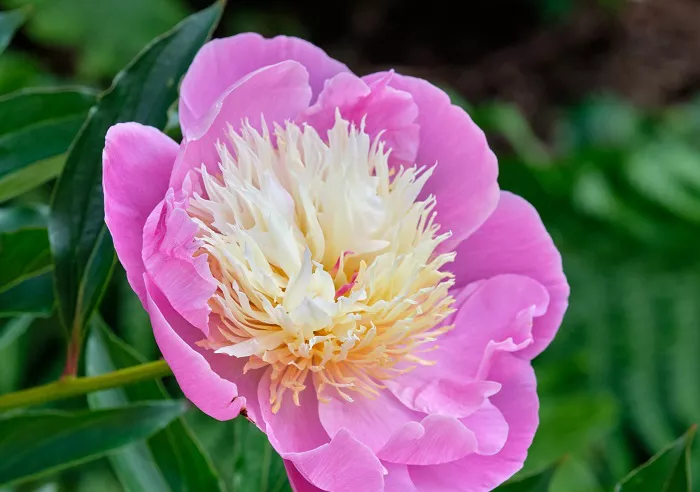Spring is the season when nature awakens, and the peony, often referred to as the “king of flowers,” is one of the most anticipated blooms. With their lush, full petals and vibrant colors, peonies symbolize prosperity and romance. As we step into the warmer months, many garden enthusiasts wonder if it’s the right time to enjoy these magnificent flowers. Let’s delve into the world of peonies to uncover their seasonal charm and how to best appreciate them.
The Seasonal Cycle of Peonies
Peonies are perennials that typically bloom in late spring to early summer. In temperate regions, their flowering season usually spans from late April to early June. However, the exact timing can vary based on climate and specific cultivar. For instance, in regions with milder winters and earlier springs, such as parts of the southern United States, peonies may start blooming in early May. In contrast, in cooler climates like the Pacific Northwest or northern Europe, they might peak in late May to early June.
Early Bloomers vs. Late Bloomers
Peony varieties are categorized into early, mid, and late-season bloomers. Early bloomers, such as the ‘Festiva Maxima’ and ‘Karl Rosenfield,’ often start showing their buds in late April to early May. These varieties are perfect for gardeners who want to enjoy the first flush of peony blooms. Mid-season peonies, like ‘Sarah Bernhardt’ and ‘Buckeye Belle,’ typically bloom in mid-May to early June. They offer a bridge between the early and late bloomers, ensuring a continuous display of flowers. Late-season peonies, including ‘Duchesse de Nemours’ and ‘Edulis Superba,’ extend the blooming period into early June. By planting a mix of these varieties, gardeners can enjoy peonies for several weeks.
Climate and Cultivation
The blooming season of peonies is heavily influenced by climate conditions. Peonies thrive in USDA hardiness zones 3 to 8, where they receive the necessary chilling period during winter to trigger their spring growth. In regions with harsh winters, a deep freeze can delay the blooming period by a couple of weeks. Conversely, in areas with unseasonably warm spring temperatures, peonies may bloom earlier than expected. Gardeners should monitor local weather patterns to predict the best time to enjoy their peonies.
Soil and Sunlight Requirements
Peonies prefer well-drained soil with a neutral to slightly acidic pH level. They also require at least six hours of direct sunlight per day to produce their best blooms. Planting peonies in a location with morning sun and afternoon shade can help protect them from the intense heat of midday sun, which can cause the blooms to wilt prematurely. Additionally, adding organic matter to the soil can improve its structure and fertility, providing the necessary nutrients for healthy growth.
Caring for Peonies
To ensure a successful blooming season, proper care is essential. Peonies should be planted in the fall, allowing their roots to establish before winter. When planting, ensure the eyes (buds) are no more than two inches below the soil surface. Overly deep planting can prevent the plants from blooming. During the growing season, regular watering is crucial, especially during dry spells. However, avoid overwatering, as peonies are susceptible to root rot in poorly drained soil.
Pest and Disease Management
Peonies are generally hardy plants, but they can be affected by pests and diseases. Common issues include botrytis blight, which causes gray mold on buds and leaves, and leaf blotch, which appears as dark spots on the foliage. To prevent these problems, ensure good air circulation around the plants and avoid overhead watering. If pests like aphids or thrips become a problem, use organic insecticidal soap to control them. Regularly inspecting the plants and removing any affected leaves or buds can also help maintain their health.
Peonies in the Garden and Beyond
Peonies are not just beautiful in the garden; they also make excellent cut flowers. With proper handling, peony blooms can last up to a week in a vase. When cutting peonies, choose buds that are just starting to open, and make a clean cut at an angle. Removing any leaves that will be submerged in water can prevent bacterial growth. Adding a floral preservative to the vase water can also help extend the life of the blooms.
Companion Planting
In the garden, peonies can be paired with other spring-blooming plants to create a stunning display. Companions like irises, alliums, and lupines can complement the peonies’ colors and textures. These plants also have similar sunlight and soil requirements, making them ideal partners. Additionally, planting ground covers like creeping phlox or thyme around the base of peonies can help suppress weeds and retain soil moisture.
Conclusion
As spring unfolds, the question of whether peonies are in season now can be answered with a resounding yes in many regions. With their captivating beauty and delightful fragrance, peonies are a true delight for any garden. By understanding their seasonal cycle, providing the right growing conditions, and giving them proper care, gardeners can enjoy these magnificent blooms year after year. So, step into your garden, and let the enchanting world of peonies brighten your spring days.

